2023 Maserati MC20 Cielo First Drive Review: Fine-tuned from the top down
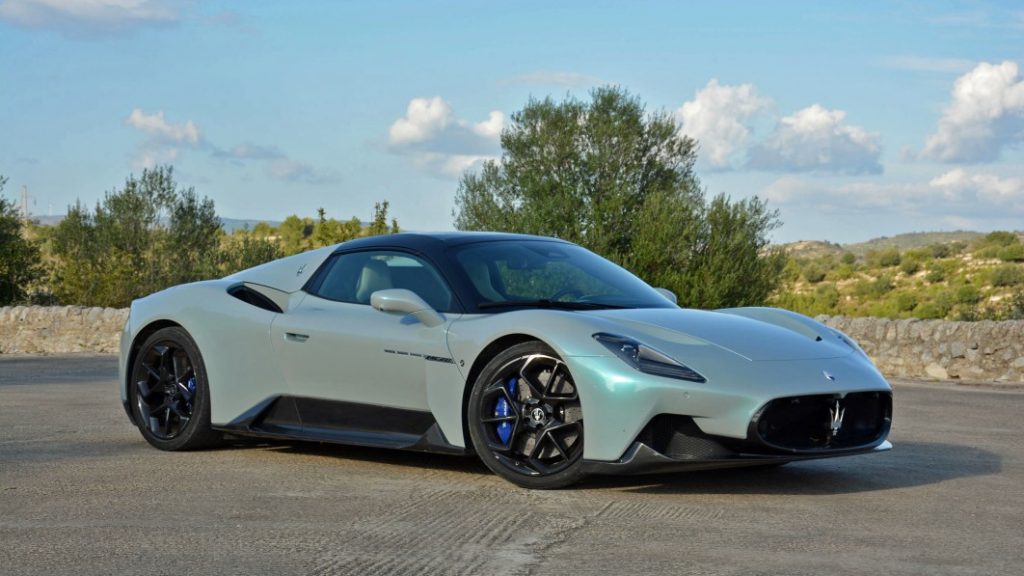
CATANIA, Sicily — “We wanted to give the Cielo the same behavior and character as the MC20 but with the sharp edges made a little smoother,” explained Federico Landini, the man in charge of the MC20’s development.
Cielo is the name Maserati chose for the convertible MC20 — it means “sky” in Italian and sounds less generic than Spider, Spyder or another arachnid-inspired label. This new version of Maserati’s first supercar in over a decade slots in the range as a softer, more touring-oriented alternative to the coupe. While the two MC20s look a lot alike, Maserati ensured the Cielo has its own personality.
Same heart, different bones
Like the MC20 coupe, the Cielo is powered by Maserati’s excellent 3.0-liter Nettuno V6 engine, which is twin-turbocharged to develop 621 horsepower at 7,500 rpm and 538 pound-feet of torque from 3,000 to 5,500 rpm. While 600+ horsepower is par for the course in this segment, achieving that number with six cylinders is rather unusual. The engine develops 207 horsepower per liter of displacement. If every engine offered this level of power density, we’d have a 414-horsepower Volkswagen Golf GTI to play with.
This engine also powers variants of the Grecale SUV, though the MC20 models use a dry-sump lubrication system. Landini told me Maserati felt confident sending a V6 into a ring dominated by rivals with eight or more cylinders because it fitted the engine with both direct and indirect fuel injection systems. This innovative technology — which traces its roots to Formula One racing — adds pre-chambers inside the cylinder head and a second set of spark plugs to the 90-degree V6 to provide a 100-horsepower boost.
Mid-mounted, the Nettuno spins the Cielo’s rear wheels via an eight-speed automatic transmission linked to a pair of steering-wheel-mounted shift paddles. Maserati quotes a 0-62-mph time of a little under 3 seconds and a top speed of approximately 199 mph, so the coupe is slightly quicker and faster.
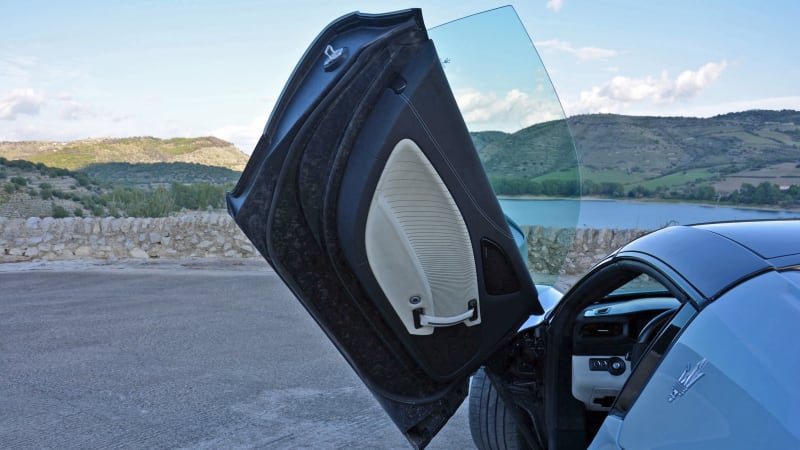
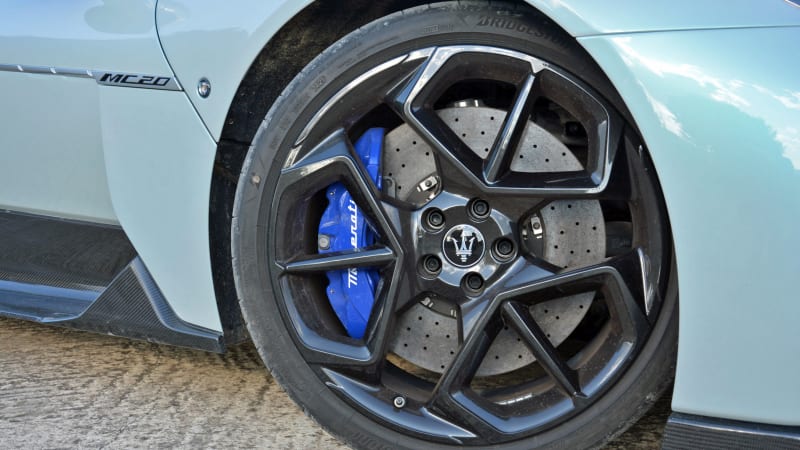
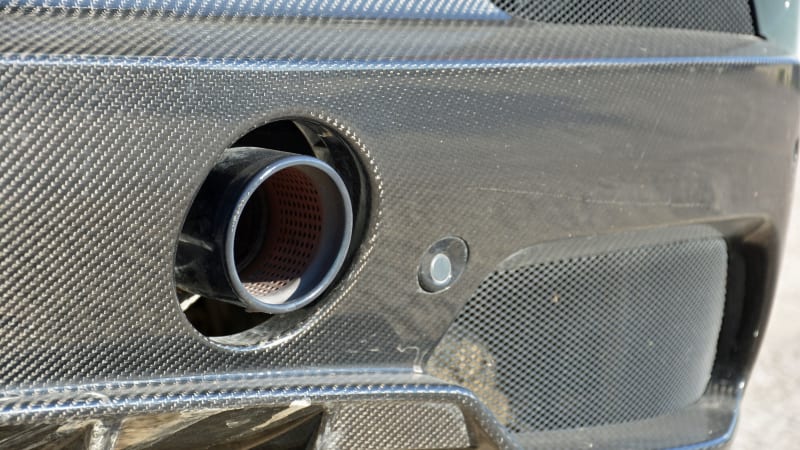
Giving up two or three tenths of a second to highway speeds and forfeiting a few miles per hour at the top end is a fair trade for unlimited headroom. Going topless also makes the Cielo about 143 pounds heavier than the coupe: it tips the scale at roughly 3,400 pounds, which remains reasonably light.
Landini stresses the increase corresponds exactly to the weight of the folding roof and its mechanism, and he adds that his team managed to avoid making the Cielo too plump because they planned this variant from the get-go; it wasn’t developed as an afterthought. Chassis changes further set the Cielo apart.
“We fine-tuned the suspension system due to the difference in weight balance depending on whether the roof is up or down. The roof is over the back end when it’s down, so we made the rear springs stiffer and in turn we needed to rebalance the dampers,” Landini told me. Chopping off the top also gets rid of the secondary load line that prevents the carbon fiber monocoque from bending and cracking in the event of an accident by transferring forces, so Maserati cleverly added cast-aluminum inserts to the doors and the sills to offset the loss of rigidity and keep the tub in one piece under pressure.
Visually, the MC20’s fluid, low-slung silhouette remains relatively unchanged, though the engine is no longer visible through the decklid. The cabin is standard MC20 fare with an important exception: The dial on the center console used to select one of the four driving modes is now digital. The Cielo also inaugurates a suite of electronic driving aids that includes traffic sign recognition, a forward collision warning system, and automatic emergency braking. The coupe will soon receive these technologies.
Softer, but not soft
“We have defined a new GT mode that completely changes the setup of the suspension and steering systems, the throttle response, the gearbox response and the rear differential,” Landini tells me.
Even in GT mode, which is the default configuration, the MC20 Cielo isn’t overly soft. Using imperial stouts as an analogy (‘tis the season!), I’d peg the MC20 at 9% and the Cielo at 8.5%. It’s a helluva lot more hardcore than the GranCabrio, for example, and it represents a rarely-seen facet of Maserati.
Historically, supercars of the MC20’s ilk have been an infrequent treat from a firm whose cars are better known for effortless power and luxury than for the ability to take a corner flat-out. And yet, the MC20 Cielo makes a convincing case for itself in the supercar arena: It’s quick, it offers a sporty seating position, and it’s engaging to drive — addictive, even. There’s very little in the way of body roll, even with the GT mode’s softer suspension setting, and the steering is communicative and refreshingly crisp.
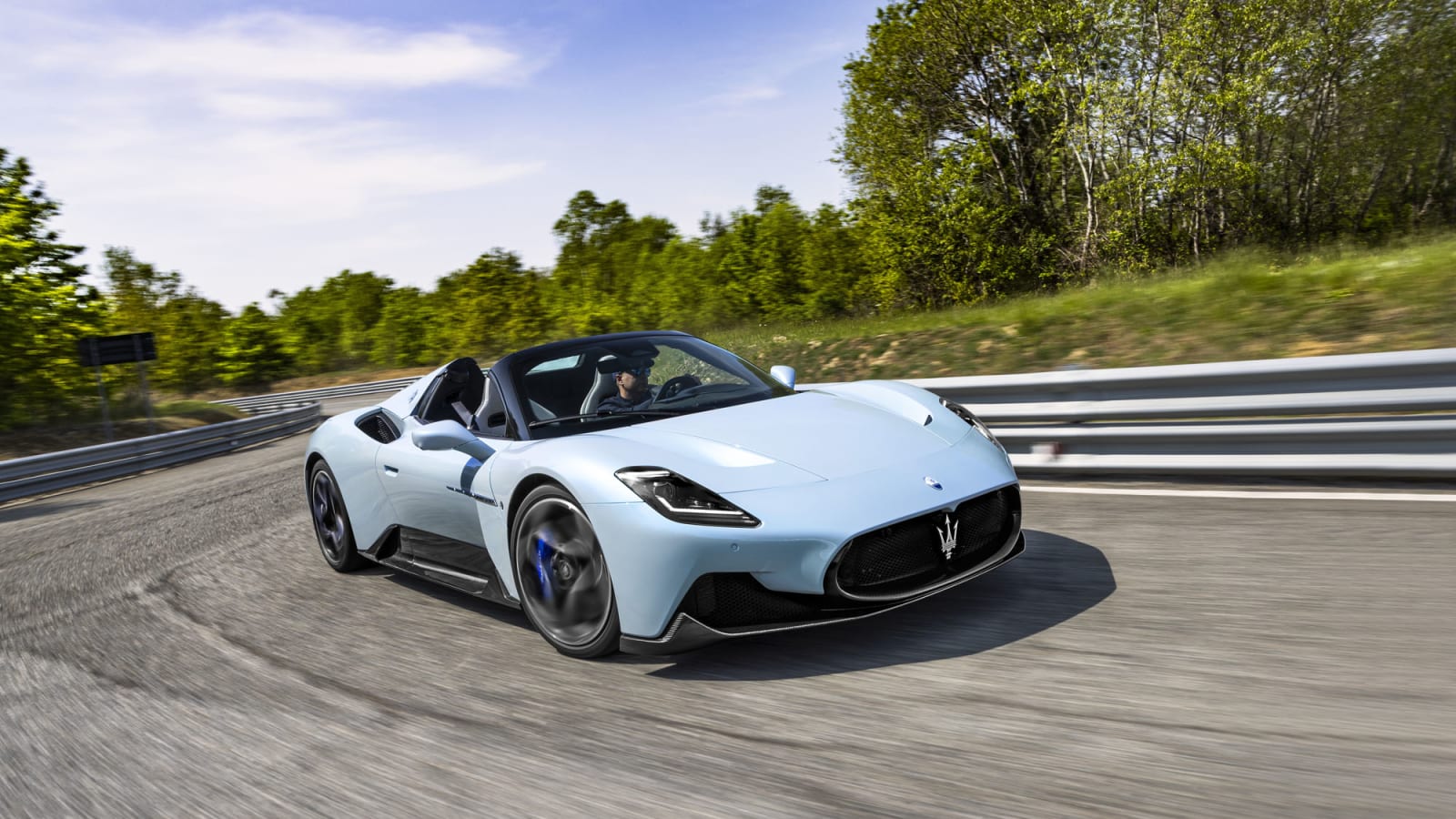
Selecting the Sport profile is like pouring gasoline on the MC20 bonfire: It gives the exhaust system permission to sing a louder tune (complete with an assortment of whoosh noises from the turbos), tells the transmission to hold each gear for longer and makes the suspension firmer. It’s in this mode that the MC20 feels most in its element: it’s markedly livelier than in GT mode, and it makes you understand why Maserati asked Brembo to develop the huge brakes. It’s also not unduly harsh; it’s easy to drive even if you’re not Sebastian Vettel, and it’s not the kind of supercar that convinces you it’s out to kill you.
Blowing with the V6 gales doesn’t tone down the MC20’s zest. The six puts the “Godfather”-like Sicilian countryside on fast-forward with only a hint of lag, and the transmission fires off quick, smooth shifts, whether they’re trigged by a computer or by the carbon fiber paddles on the steering wheel. There’s a ton of grip and a pair of nicely-bolstered Sabelt seats to ensure you’re not pinballed across the cabin.
Like every good supercar, the MC20 Cielo boasts an appeal that completely transcends the specifications sheet. It’s not merely about the 0-to-60 time or the top speed. Character is difficult to quantify, but it’s hugely important in the constitution of a supercar’s identity, and the MC20 Cielo is brimming with it. From the butterfly doors to the symphony of combustion and turbo noises filling the cabin from behind, the MC20 is as much about looks and performance as it is about the overall experience.
All of it is authentic and purpose-driven: The butterfly doors draw eyeballs on Instagram, but they’re there to make the MC20 easier to get in and out of by reducing the width of the sills. The noise that charges through the interior comes directly from the drivetrain. An assortment of valves in the exhaust system adjusts the volume depending on the driving mode chosen, but the sound isn’t artificial.
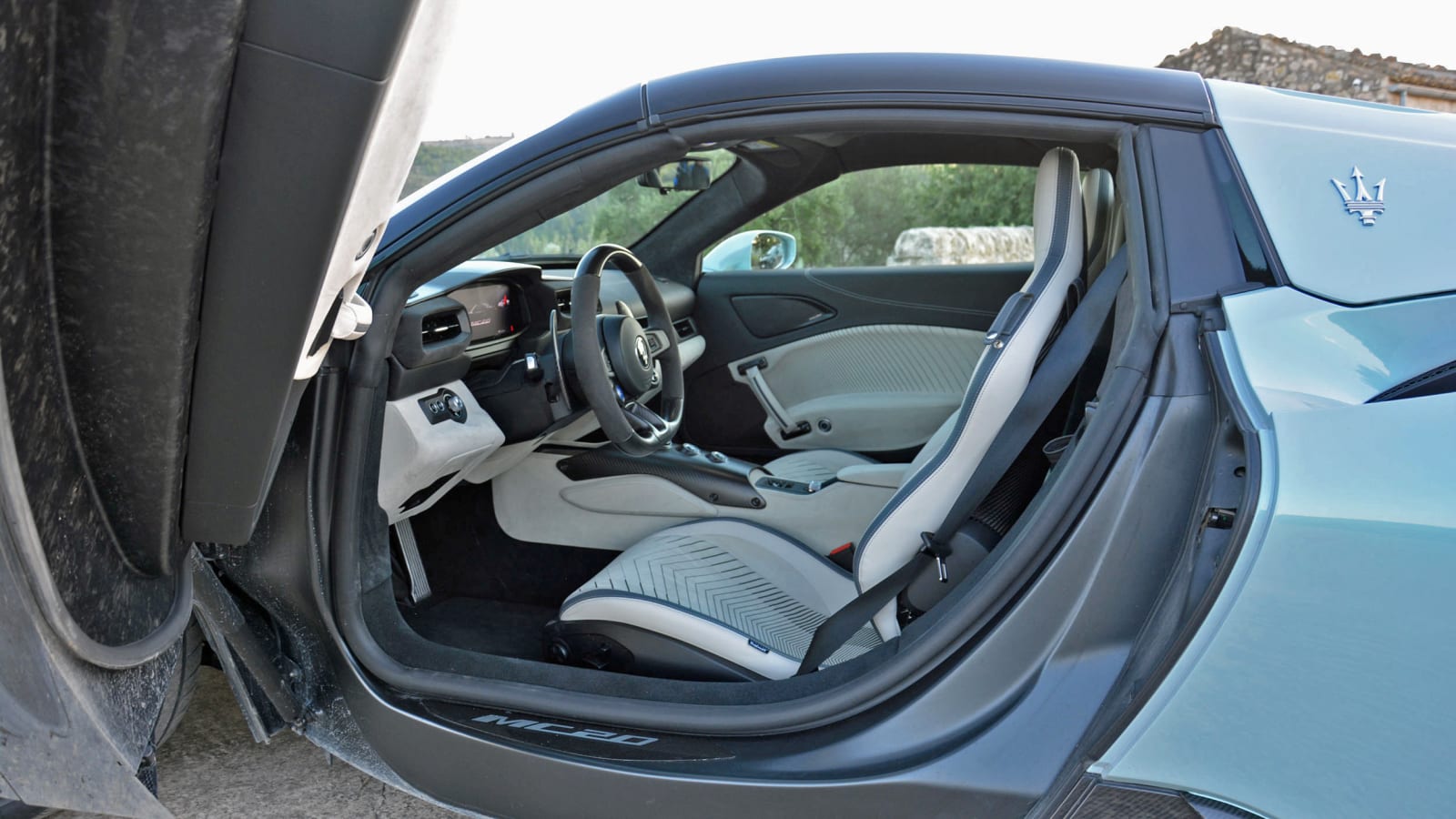
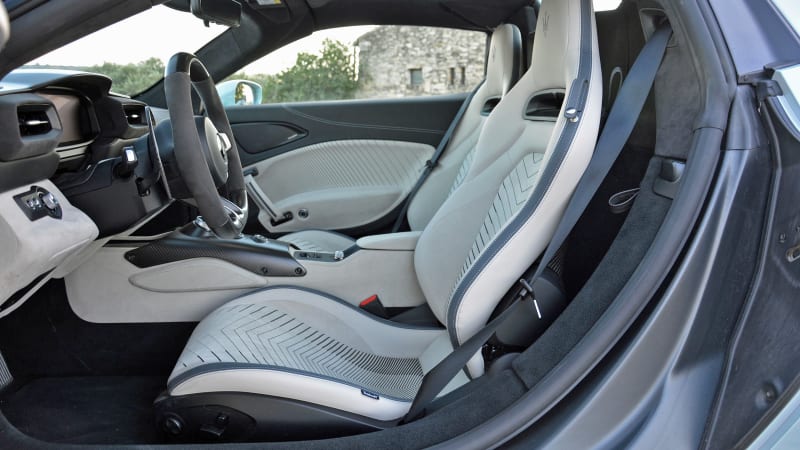
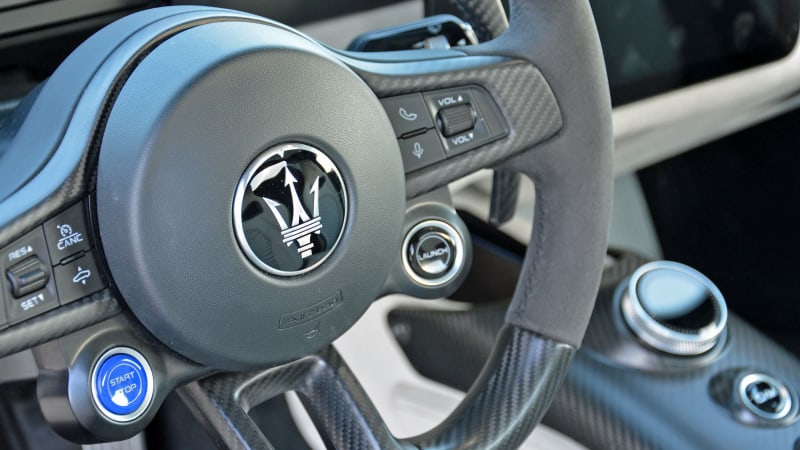
Digitalization allowed Maserati to give the MC20 a clean, minimalist interior design, but there are some features that I’d change if I could go back and intervene in the development process. I found the coupe’s analog driving mode selector more user-friendly than the digital unit fitted to the Cielo, especially since some of the driving modes have sub-modes (“soft” or “mid” for the suspension system, for example). And, while the 10.25-inch touchscreen-based, Android Automotive-powered infotainment system is reasonably straightforward to navigate, a physical button to operate the top would be a welcome addition. As it stands, opening and closing the roof is done via a menu in the infotainment software.
Deliciously excessive
Quick, sharp, fun, yet approachable, the MC20 Cielo keeps what’s great about the MC20 coupe and adds a power-folding hardtop. It’s a recipe that’s difficult to argue against. It doesn’t feel compromised, and the effort that Landini and his team put into creating a genuine supercar is evident mile after mile.
On a secondary level, the MC20 range serves as a reminder that great engines and fun-to-drive cars deserve to exist, even in an era when we’re being force-fed a stew of electrification and pseudo-autonomous driving aids by carmakers all over the automotive spectrum. Like eating, driving can be as mundane or as enjoyable as you choose to make it. An apple a day keeps the doctor away, but how boring would life be if you couldn’t devour a pizza as big as an old Volkswagen Golf’s steel wheel from time to time?
That’s the MC20’s position in the automotive landscape: Delicious, and just the right level of excessive.
Pricing hasn’t been announced. The MC20 coupe starts at approximately $212,000, and it’s reasonable to assume the Cielo will cost more. American deliveries are scheduled to start in the first quarter of 2023.
Related video:



